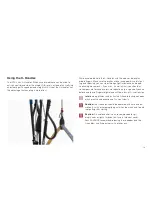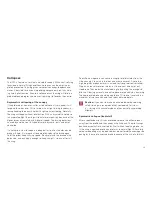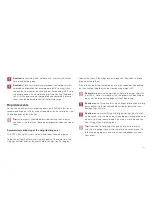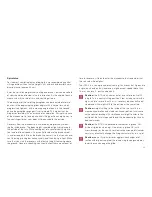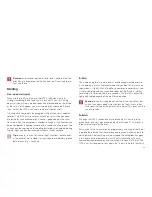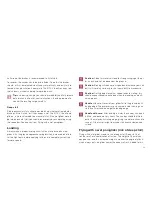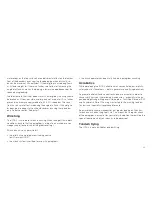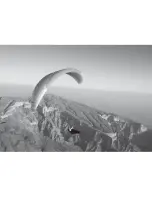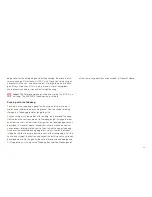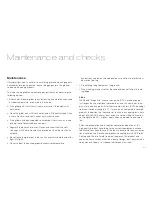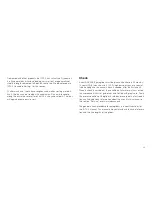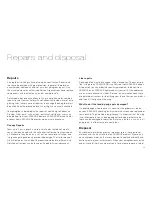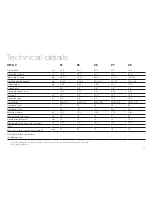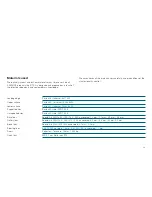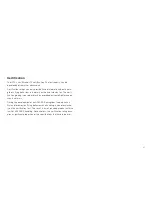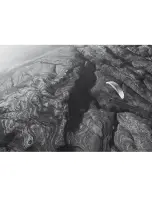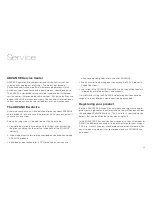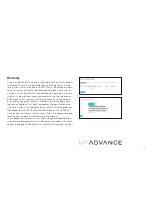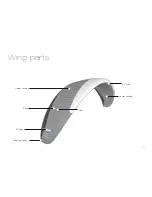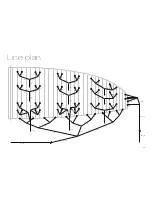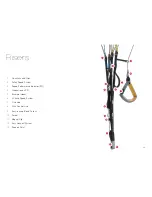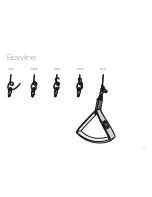
Repairs
A paraglider is a lifting surface of complex construction . Seams and
lines have been made with great precision . In general, therefore, an
unauthorised individual should not carry out paraglider repairs . Only
the manufacturer or an authorised Service Organisation should replace
components with identical parts, or refit complete cells .
Small repairs become exceptions to this principle . Examples could be
repairs to small tears or holes with self-adhesive Ripstop material, or re-
placing lines . In every case of repair or line change the paraglider must
be pulled up on the ground before its next flight, and visually checked .
Your paraglider is delivered with a repair kit containing self-adhesive
Ripstop . Other parts, such as lines, quicklinks, softlinks or risers can
be obtained from your ADVANCE dealer, an ADVANCE Service Center
or direct from ADVANCE . Addresses are on www .advance .ch .
Canopy Repairs
Tears up to 3 cm in length, and very small holes that do not meet a
seam, can be patched with the self-adhesive Ripstop from your repair
kit . Make sure than the patch is cut out in a round or oval shape, and
is big enough to generously overlap the damage . The similar piece of
sticky Ripstop on the inside of the repair should be of a different size .
Detailed instructions can be found on Eine detaill www .advance .ch .
Line repairs
A damaged line must be changed, without exception . The easiest op-
tion is to go to an ADVANCE Service Centre or your ADVANCE dealer .
Alternatively you can order the specific replacement line direct from
ADVANCE or an ADVANCE dealer and fit it yourself . All the addresses
are on: www .advance .ch . Under “Service” on www .advance .ch there
are detailed instructions for identifying your line so that you can order it,
and then fit it correctly on the wing .
What to do if the leading edge gets damaged?
If a leading edge wire breaks or its seam rips the glider must be tak-
en to an ADVANCE checking facility where the wire can be replaced or
sewn back in . To guarantee a long lifespan it is important that the wing
is not allowed to fall on its leading edge after landing, otherwise the
fabric can be damaged by abrasion . But mainly there is a risk, as in all
paragliders, that the crossports could tear .
Disposal
Environmental protection plays an important role in the selection of
materials and the manufacture of an ADVANCE product . We use only
non-hazardous materials that are subjected to continuous quality and
environmental impact assessments . When your paraglider reaches the
end of its useful life in a number of years time, please remove all metal
Repairs and disposal
33
Summary of Contents for IOTA2
Page 1: ...Edition 1 12_2017 Manual...
Page 2: ......
Page 14: ...14...
Page 26: ...26...
Page 27: ...27...
Page 28: ...28...
Page 34: ...parts and dispose of the lines canopy and risers in a waste incinera tion plant 34...
Page 38: ...38...
Page 41: ...Wing parts Winglet Upper surface Cleaning velcro Ribs Lower surface Air inlets Cells 41...
Page 44: ...Bowline 44...

